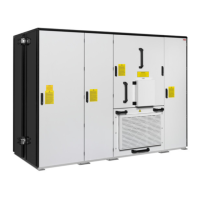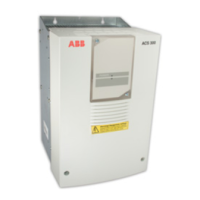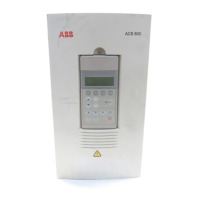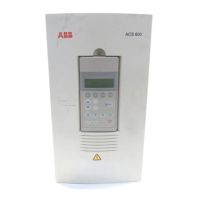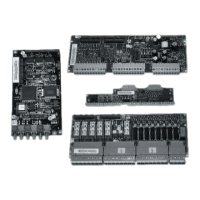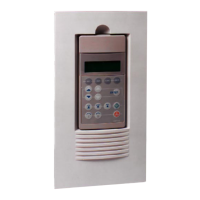DC voltage charging due to leakage capacitances of the motor circuit. This
voltage can remain charged for a long time after the drive power-off. The
measurement discharges the voltage.
• Make sure that the voltage between the drive DC busbars and the grounding
(PE) busbar is zero.
• Make sure that the voltage between the energy storage terminals of the DC/DC
converter unit (ES+ and ES-) and the grounding (PE) busbar is zero.
WARNING!
The busbars inside the cabinet of liquid-cooled drives are partially coated.
Measurements made through the coating are potentially unreliable, so only
measure at uncoated portions. Note that the coating does not constitute
a safe or touch-proof insulation.
6. Install temporary grounding as required by the local regulations.
7. Ask for a permit to work from the person in control of the electrical installation
work.
Measuring the insulation resistance of the DC cabling
WARNING!
Obey the safety instructions of the drive. If you ignore them, injury or
death, or damage to the equipment can occur. If you are not a qualified
electrical professional, do not do installation, commissioning or
maintenance work.
WARNING!
Before you measure the insulation resistance of the DC cabling, open the DC
switch/disconnector [Q11] of the converter unit. Also make sure that the
charging switch [Q10] is open.
WARNING!
Do not do voltage withstand or insulation resistance tests on the drive. The
tests can cause damage to the drive. Every drive is tested for insulation between
the main circuit and the chassis at the factory. Also, there are voltage-limiting
circuits inside the drive which cut down the testing voltage automatically.
Measure the insulation resistance of the DC cabling as follows:
1. Make sure that the cable is disconnected at the drive end and at the other end.
All conductors and the cable shield must be disconnected.
2. At the drive end, connect all conductors and shield of the cable together and to
the grounding busbar (PE).
3. Disconnect one conductor and measure the insulation resistance between the
conductor and the grounding busbar (PE). Use a measuring voltage of 1 kV DC.
The insulation resistance must be higher than 1 Mohm.
4. Disconnect another conductor and measure its insulation resistance. Do this for
all remaining conductors (including the cable shield).
Electrical installation 51
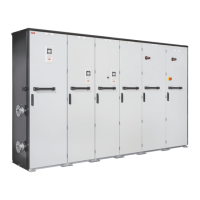
